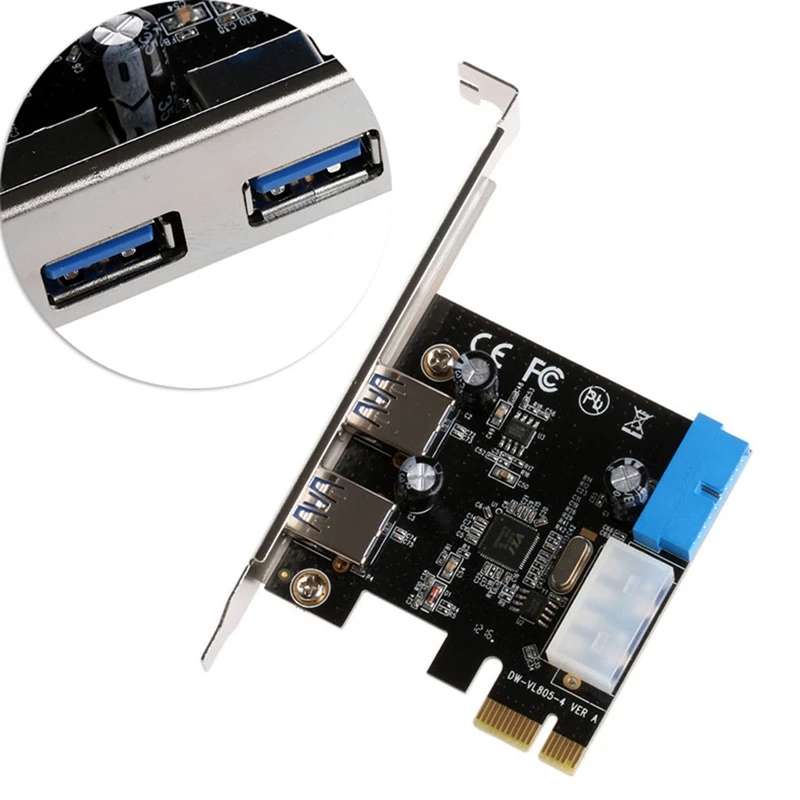

Usb 3 card for pci full#
But of course we all know damn well its tough to get 4 devices running at full speed at the exact same time anyway.
Usb 3 card for pci upgrade#
The OP is asking for a product that probably doesnt exist because theres no way in hell you could have all 4 USB ports running full speed on a PCI bus. Two-Port USB 3.0 Adapter Card- Cost-Effective Computer Upgrade The PCIUSB3S22 USB 3.0 card enables you to connect USB 3.0 peripherals to a PC through a legacy PCI host bus, which doubles the data transfer speeds when used with USB 3.0 peripherals than would be possible with a USB 2.0 host connection. The old PCI bus doesnt have that kind of bandwidth, so its pretty much a guarantee you need to use your PCI-e slot, if you have one available.

However, USB 2.0 requires a fair amount of bandwidth and USB 3 requires even more.
Usb 3 card for pci windows#
If you arent happy with the 4 USB headers found on the mainboard (or dont have enough USB ports on your case, if any) you can slap in a USB expansion card with your PCI slot and have 4 or 5 more ports. ASHATA PCI-E USB 3.0 Card, 2 Ports PCI Express to USB Expansion Card, Support 5Gbps, Internal PCI-e USB3 Hub Converter for Desktop PC Host, Support Windows 10/8.

Now while all 3 of those devices are commonly found on all modern mainboards, people still like the option to add more or better devices. PCI-e X 1 is the standard for small devices like modern audio cards, SATA controller cards, and USB expansion cards. And if I'm not mistaken its a little longer than the AGP slot. PCI-e X 16 is now the standard for video cards because of the insane bandwidth needed. For a while the two main contenders (PCI-X and PCI-e) competed with each other but eventually PCI-e won the day. However it was deemed that too much large crap was still on motherboards and another standard was needed to both increase bandwidth and save space. AGP was increased in speed 8 times over and served the industry well for a long time. USB 3.0 PCI-E Card, ORICO PCI-E 7 USB 3.0 Ports Controller Card Adapter Add on Card Interface 7x USB3.0 Desktop with 15 pin SATA Power Connector for Windows Vista PC, Speed Up to 5.0 Gbps. So the AGP (accelerated graphics port) standard was formed and it had considerably more bandwidth, in fact so much bandwidth it was reserved exclusively for high end graphics cars and I dont believe any other devices were ever used in it. Eventually when 3D accelerators came around it was used for those as well, but as they got faster people found the bandwidth of PCI was too small. It was used for many things including sound cards like Sound Blaster, and video cards like Trident. Back in the good old days PCI was considered fast when compared to ISA (integrated slot architecture, which was very user friendly compared to what we had before). Its a type of slot found on your motherboard. Click to expand.PCI stands for peripheral communications interface.


 0 kommentar(er)
0 kommentar(er)
